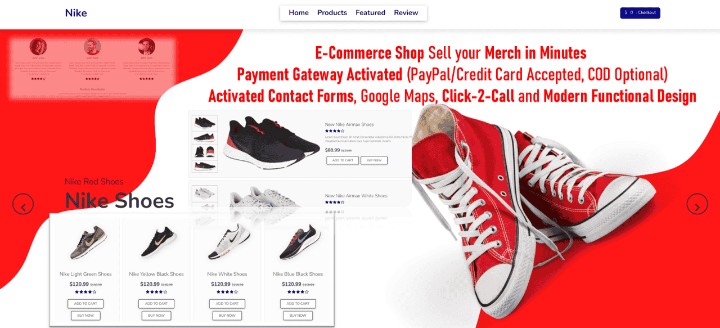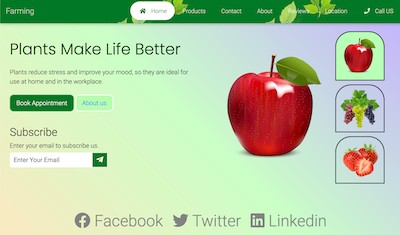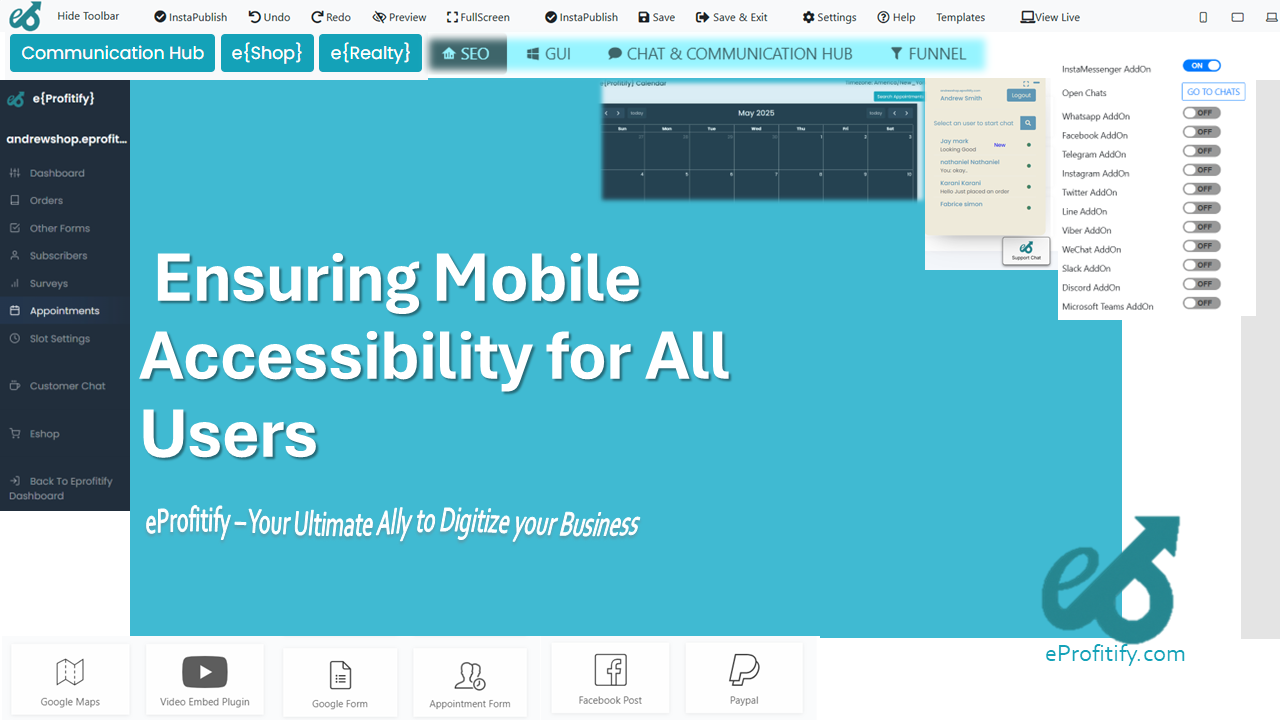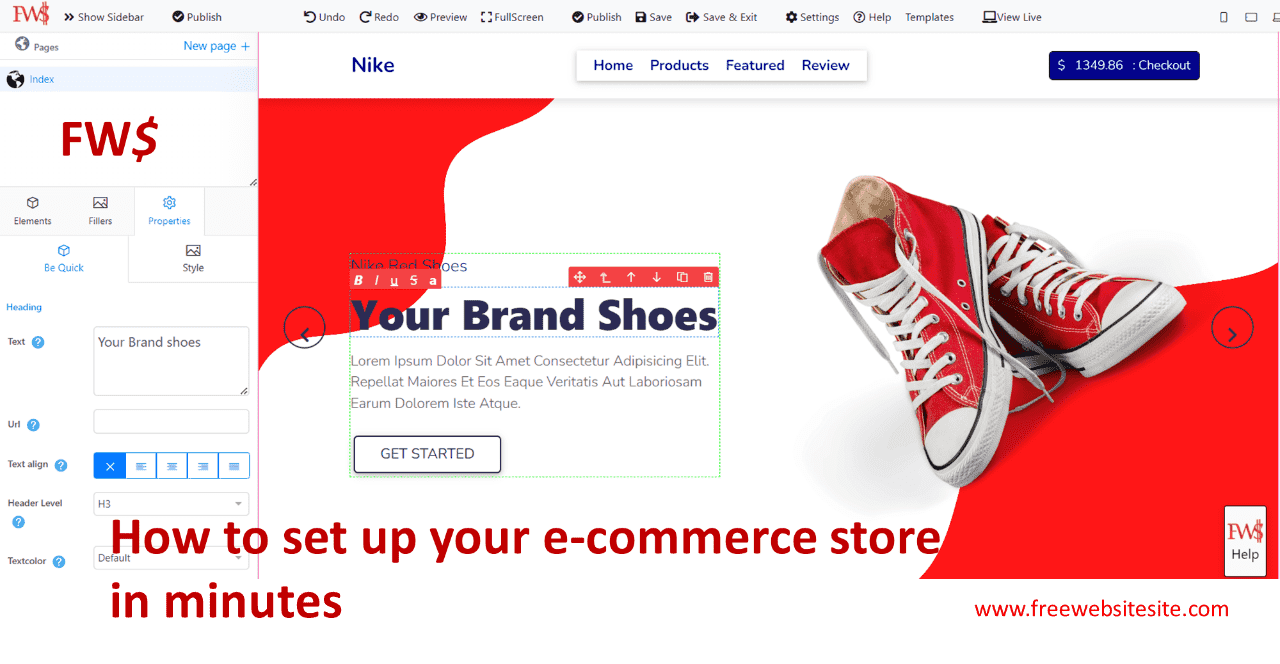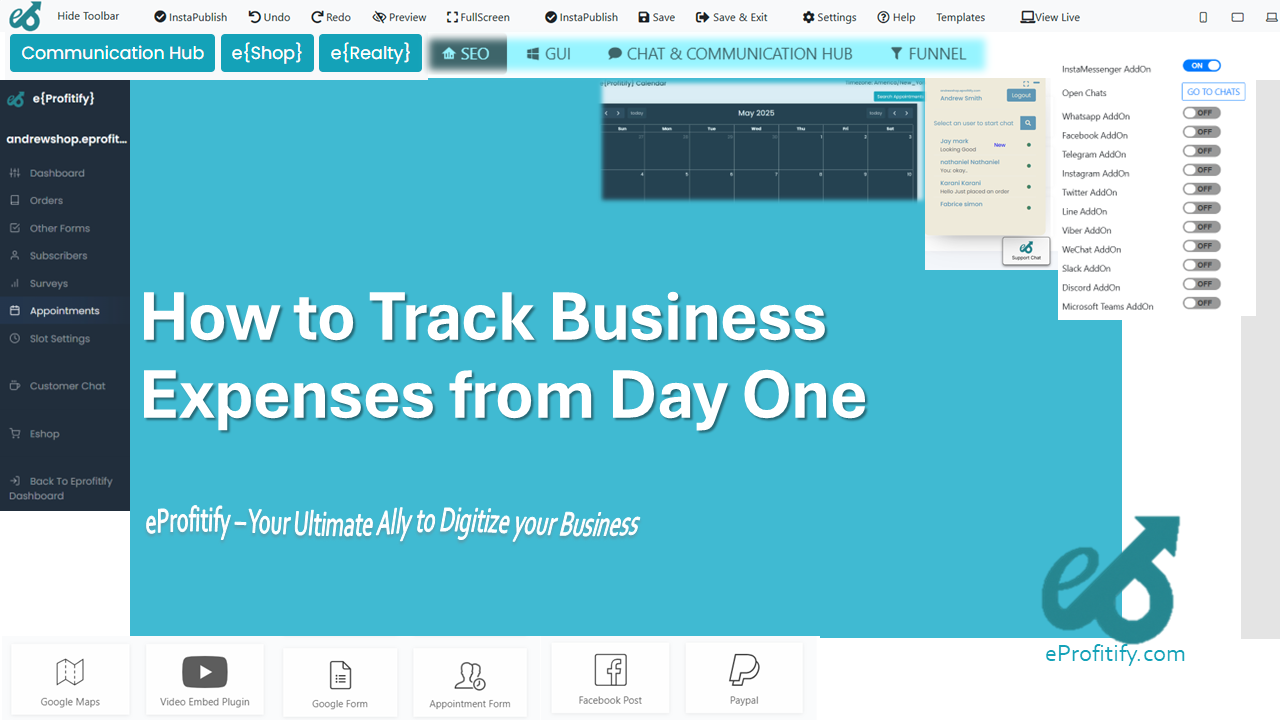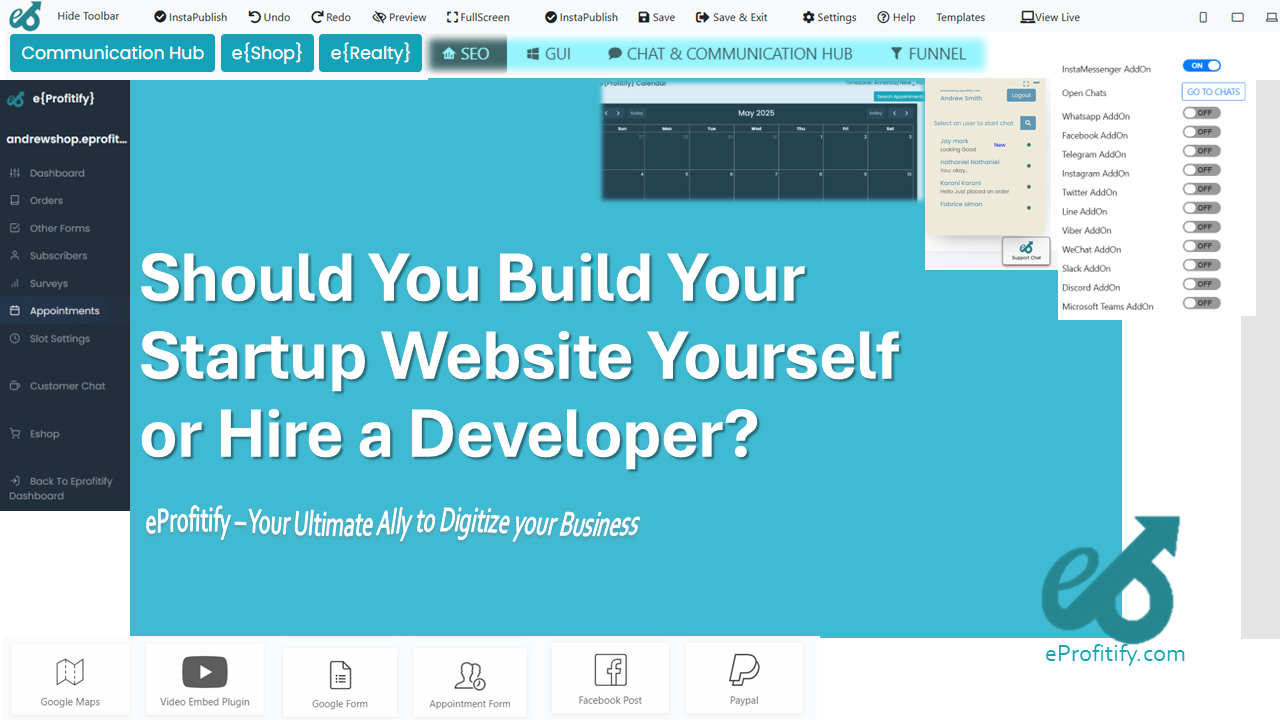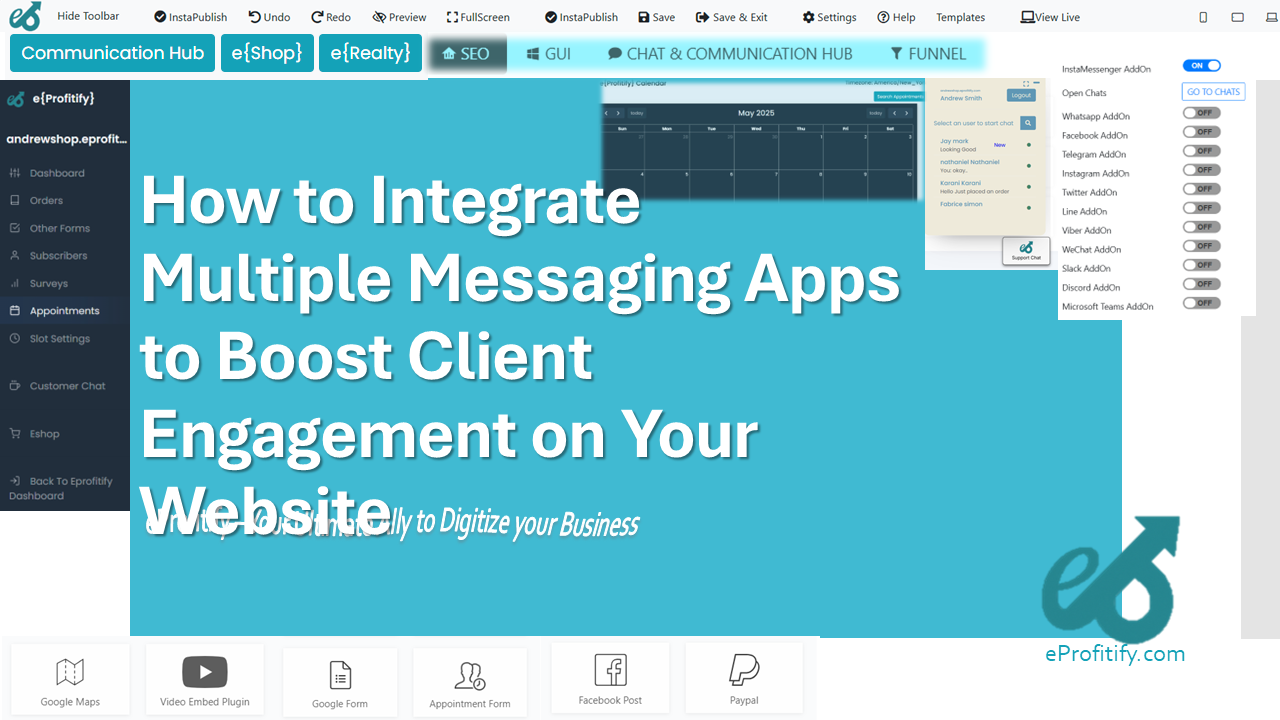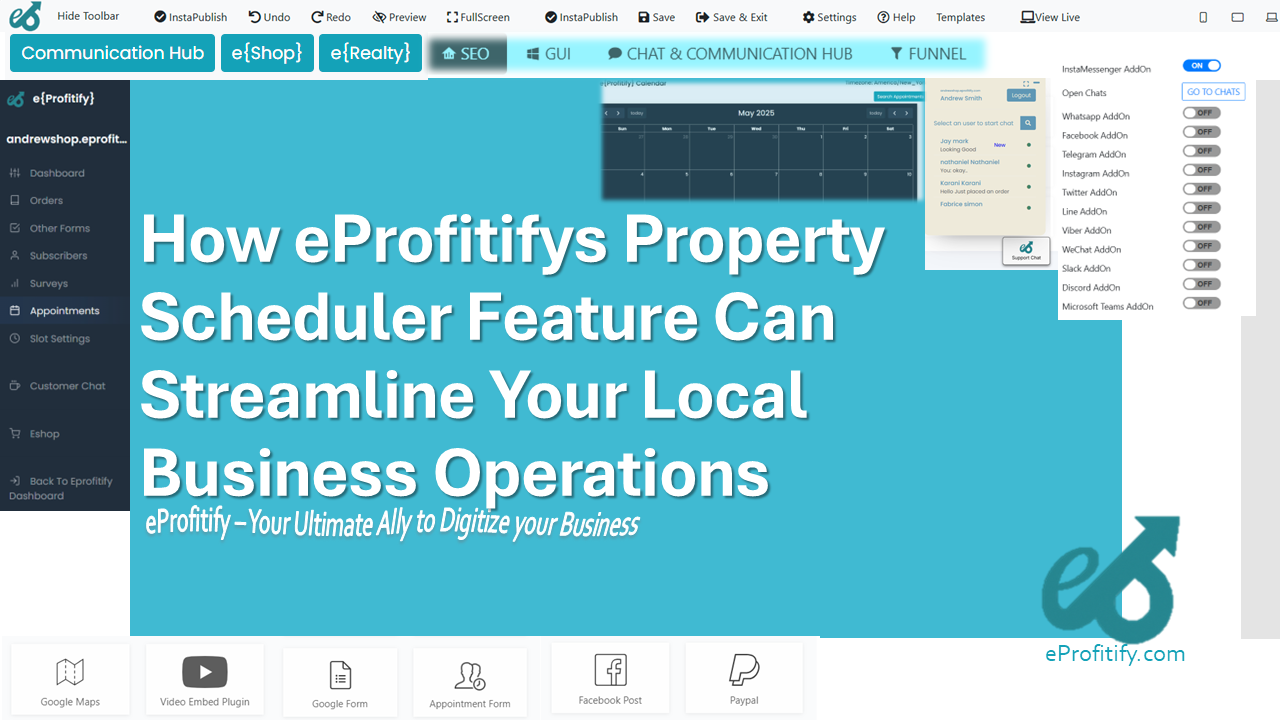Utilizing SEO Best Practices to Improve Your Website's Visibility
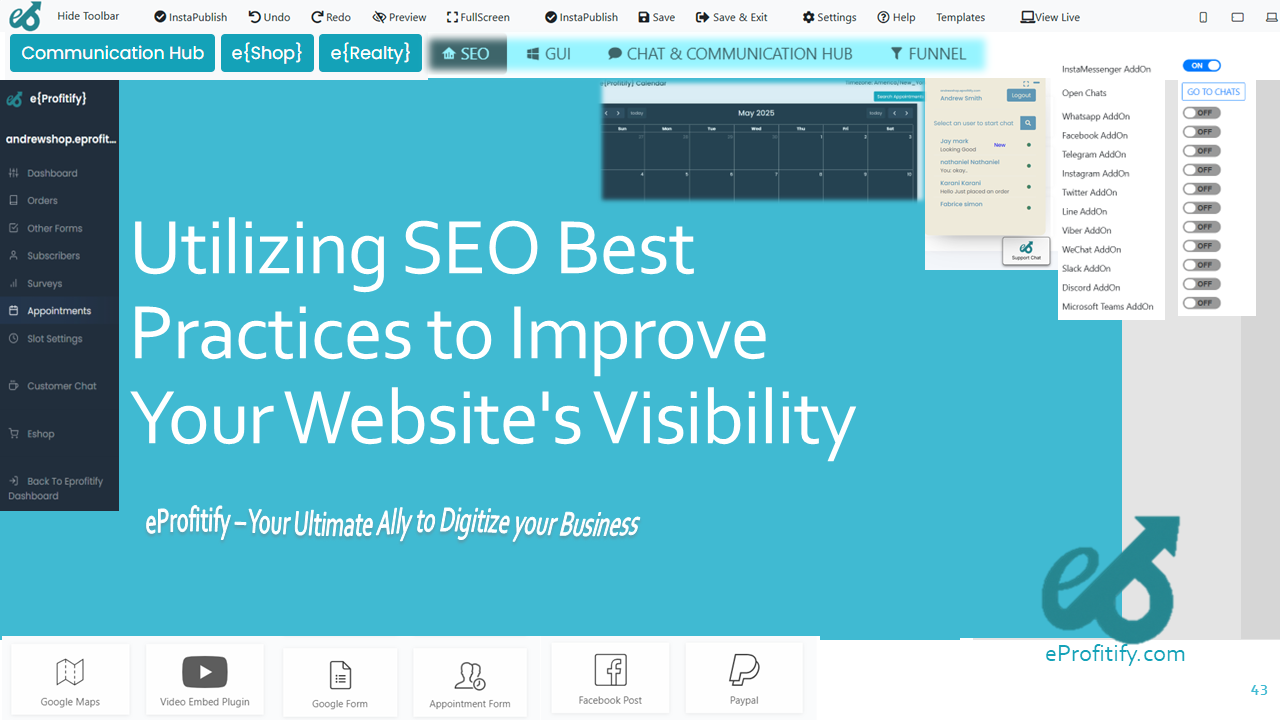
Utilizing SEO Best Practices to Improve Your Website’s Visibility
In today’s hyper-competitive digital landscape, visibility is currency. With over 1.13 billion websites vying for attention online, standing out requires more than just great content—it demands strategic optimization. Search Engine Optimization (SEO) remains the cornerstone of online success, enabling businesses to rank higher on search engine results pages (SERPs), attract organic traffic, and convert visitors into customers. This article explores actionable SEO tactics to boost your website’s visibility, supported by industry statistics, and introduces eProfitify—a leading website publishing and management platform equipped with tools to streamline your SEO efforts.
The Importance of SEO in 2024
Google processes 5.6 billion searches daily, highlighting the critical role of SEO in connecting businesses with their audience. Websites on the first page of Google capture 71% of all search traffic clicks, with the #1 result earning 27.6% of clicks. Conversely, websites ranking on the second page receive less than 1% of traffic, underscoring the urgency of optimizing for visibility.
SEO isn’t just about keywords anymore; it’s about delivering seamless user experiences, technical robustness, and value-driven content. Let’s break down the key components of modern SEO:
1. On-Page SEO: Optimizing Content for Relevance
On-page SEO focuses on aligning your website’s content with search intent. Key practices include:
- Keyword Research: Target long-tail keywords (3–5 words) that match user queries. Tools like Ahrefs or SEMrush can uncover low-competition, high-traffic terms.
- Meta Tags & Headings: Craft compelling title tags (under 60 characters) and meta descriptions (under 160 characters). Use H1, H2, and H3 headings to structure content.
- Voice Search Optimization: With 20% of mobile searches conducted via voice, focus on conversational phrases (e.g., “best Italian restaurant near me”).
Statistic: Pages optimized for semantic search (contextual relevance) earn 30% more traffic than those targeting exact-match keywords.
eProfitify Integration: The platform’s built-in SEO analyzer auto-suggests keywords, meta tags, and readability improvements. Its AI-powered content tools ensure your pages align with Google’s E-E-A-T (Experience, Expertise, Authoritativeness, Trustworthiness) guidelines.
2. Technical SEO: Building a Strong Foundation
Technical SEO ensures your website is crawler-friendly and fast. Key areas include:
- Site Speed: Pages that load in 1–2 seconds have a 30% lower bounce rate. Optimize images, leverage browser caching, and use a Content Delivery Network (CDN).
- Mobile-First Indexing: With 60% of global web traffic coming from mobile devices, ensure your site is responsive. Google prioritizes mobile-friendly sites.
- Structured Data: Implement schema markup to help search engines understand your content, increasing chances of rich snippets (e.g., star ratings, FAQs).
Statistic: A 1-second delay in page load time can reduce conversions by 7%.
eProfitify Integration: The platform’s CDN accelerates page speed, while automatic mobile optimization and schema markup generators simplify technical SEO. Regular site audits identify issues like broken links or duplicate content.
3. Content SEO: Prioritizing Quality & Value
Content is the backbone of SEO, but quality trumps quantity. Strategies include:
- Blogging: Companies that publish 16+ blog posts monthly get 3.5x more traffic than those with 0–4 posts (HubSpot).
- Keyword Density: Maintain a natural keyword density of 1–2% to avoid penalties for over-optimization.
- Internal Linking: Guide users and search engines to related content. Pages with 10+ internal links earn 40% higher rankings.
Statistic: Websites with long-form content (1,500+ words) generate 68% more leads.
eProfitify Integration: Use the platform’s content calendar to schedule blogs, track performance, and repurpose high-performing posts. Its AI writing assistant helps create SEO-friendly drafts.
4. Local SEO: Capturing Nearby Audiences
For small businesses, local SEO is non-negotiable:
- Google Business Profile (GBP): Optimize your listing with accurate NAP (Name, Address, Phone Number), photos, and customer reviews.
- Local Keywords: Target phrases like “coffee shop in [city]” or “plumber near me.”
- Citations: Ensure consistency across directories like Yelp and Yellow Pages.
Statistic: 46% of Google searches have local intent, and 78% of local mobile searches result in purchases.
eProfitify Integration: The platform’s appointment management system syncs seamlessly with your GBP profile, allowing customers to book services directly. Its CRM consolidates customer interactions for personalized local marketing.
5. Off-Page SEO: Building Authority Through Backlinks
Off-page SEO revolves around earning high-quality backlinks:
- Guest Posting: Contribute to authoritative sites in your niche.
- Social Signals: Share content on platforms like LinkedIn and Twitter. Pages with strong social engagement rank 22% higher.
- Influencer Outreach: Partner with industry leaders to amplify your reach.
Statistic: Websites with backlinks from multiple domains are 5x more likely to rank in position #1–3 on Google.
eProfitify Integration: Use the platform’s CRM to manage influencer relationships and track outreach campaigns. Built-in analytics monitor backlink profiles for spam risks.
Why eProfitify Stands Out as an SEO Powerhouse
While SEO requires a multi-faceted approach, tools like eProfitify simplify the process. This all-in-one platform combines:
- SEO Audit Tools: Identify technical issues, keyword gaps, and performance metrics.
- Content Management: Schedule blogs, optimize meta tags, and track readability scores.
- E-Commerce Integration: Optimize product pages for SEO while managing inventory and checkout.
- CRM & Analytics: Monitor customer journeys and segment audiences for targeted campaigns.
- Instant Messaging & Automation: Engage visitors in real-time to reduce bounce rates.
Statistic: Businesses using integrated platforms like eProfitify report a 50% reduction in time spent on SEO tasks and a 35% increase in organic traffic within 6 months.
Conclusion: Future-Proof Your Visibility with SEO & eProfitify
SEO is dynamic, with Google updating its algorithm 500–600 times annually. Staying ahead requires adaptability, data-driven strategies, and efficient tools. By combining on-page polish, technical agility, authoritative content, and strategic backlinks, your website can climb the SERPs and attract sustainable traffic.
eProfitify empowers businesses to navigate this complexity effortlessly. Its unified suite of features—from SEO audits to CRM—ensures your website isn’t just visible but thrives in the digital arena. As the adage goes, “If you’re not on the first page, you don’t exist.” With SEO best practices and eProfitify, you’ll not only exist—you’ll dominate.
Statistics Sources: Ahrefs, HubSpot, Backlinko, Search Engine Journal.
